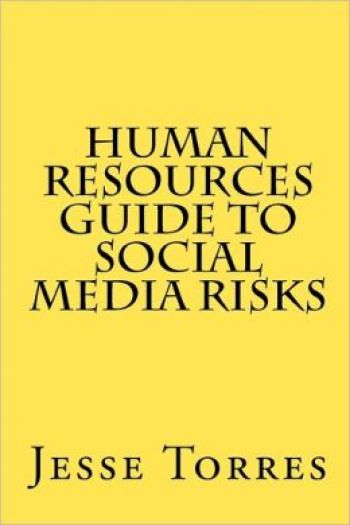Breezy guide to social media and your staff
Book Review: Bank CEO’s book summarizes how social media has changed bank HR challenge
- |
- Written by Tammy Belt
 Human Resources Guide to Social Media Risks, by Jesse Torres, CreateSpace, 2011, 57 pp.
Human Resources Guide to Social Media Risks, by Jesse Torres, CreateSpace, 2011, 57 pp.
Social media is a hot topic and the use of this tool in banking is rapidly increasing. The problem, in a nutshell, is described in this book’s introduction:
The purpose of this book is to convince companies that every organization is subject to risk in social media. Then the book assists the reader in implementing guidance in this area using policy and procedures.
This is a short, easy-to-read book that is packed with helpful information that will spark ideas for your organization to consider, even if you do not actively participate in social media at this time.
Social media has changed the way consumers get information about products and businesses. The author, a veteran banker and currently CEO at Pan American Bank, Los Angeles, defines social media and goes into detail about several different types to give the reader a good understanding of exactly what social media is.
If all you think of is Twitter, Facebook, and YouTube, note that Torres lists 23 categories of social media sites, including one he calls, “Social Media Sites That Defy Definition.”
Businesses that ignore the social media phenomenon and that do not participate are missing a great opportunity. The author points out that the line between personal and business use is becoming blurred. This brings the reader to the various risks posed by social media. Torres discusses the risks involved in employee use of social media and explains how a formal written policy on employee use of social media can be developed based on the organization’s appetite for risk.
Among the risks discussed are employer use of social media as a recruiting tool; employee use of social media; and terminations based on social media use. Here are some key points that Torres makes in each area.
Using social media as a recruiting tool: Potential job candidates cannot separate their personal and professional lives as easily as they once could. Companies can use social media to find out much more information about a potential candidate than what is revealed in an application or interview.
Importantly, written notice should be given to the applicant if social media will be used in the screening process. If an applicant is denied based on something discovered using social media, it must be well documented, Torres warns.
Employee use of social media: This may not be suited for every organization. However your bank allows it, the company must be sure to put policies and controls in place to protect the organization from misuse of social media.
This is easier to discuss than to accomplish. Even banning social media at work does not remove all risks.
Some things to consider in regards to allowing employee use, which are fully discussed in this book, are: loss of productivity; liability related to employee comments; inability to discipline employees; and disclosure of confidential information.
Some points to consider in regard to managing risks associated with employee use of social media include are: determining access to social media for personal use; determining use of social media for business purposes; and personal versus organizational accounts.
In a related vein, Torres gives direction and detail for using employees as “brand ambassadors” for the bank in the social media world. Ambassadors represent the organization to the outside world and attempt to positively influence the publics view of the organization. (Indeed, Torres makes the point that this is an expansion of their natural role as brand ambassadors. What customers see when they interact with a bank employee is your bank’s image.)
Social media-based terminations: The number of terminations related to employee use of social media has been climbing, a factor not seen by the previous generation of bank management. Torres gives examples of employee lawsuits stemming from these types of terminations.
Finally, there is a checklist of Action Items included in this book for each area discussed.
Tagged under Books for Bankers, Compliance, Management, Human Resources,













